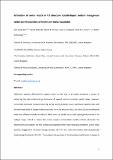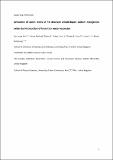Files in this item
Activation of anion redox in P3 structure cobalt-doped sodium manganese oxide via introduction of transition metal vacancies
Item metadata
| dc.contributor.author | Kim, Eun Jeong | |
| dc.contributor.author | Mofredj, Kenza | |
| dc.contributor.author | Pickup, David | |
| dc.contributor.author | Chadwick, Alan | |
| dc.contributor.author | Irvine, John Thomas Sirr | |
| dc.contributor.author | Armstrong, Robert | |
| dc.date.accessioned | 2021-10-19T23:38:41Z | |
| dc.date.available | 2021-10-19T23:38:41Z | |
| dc.date.issued | 2021-01-01 | |
| dc.identifier | 270852816 | |
| dc.identifier | 2b8b03e8-4233-4788-9d01-67ca2067a07f | |
| dc.identifier | 85092900789 | |
| dc.identifier | 000593863700005 | |
| dc.identifier.citation | Kim , E J , Mofredj , K , Pickup , D , Chadwick , A , Irvine , J T S & Armstrong , R 2021 , ' Activation of anion redox in P3 structure cobalt-doped sodium manganese oxide via introduction of transition metal vacancies ' , Journal of Power Sources , vol. 481 , 229010 . https://doi.org/10.1016/j.jpowsour.2020.229010 | en |
| dc.identifier.issn | 0378-7753 | |
| dc.identifier.other | ORCID: /0000-0002-8394-3359/work/82788538 | |
| dc.identifier.other | ORCID: /0000-0003-1937-0936/work/82788547 | |
| dc.identifier.uri | https://hdl.handle.net/10023/24170 | |
| dc.description | EJK would like to thank the Alistore ERI for the award of a studentship. This work was supported by the Faraday Institution (grant number FIRG018). | en |
| dc.description.abstract | Additional capacity delivered by oxygen redox activity may in principle represent a means of enhancing the electrochemical performance of layered sodium transition metal oxides. However, irreversible structural changes occurring during cycling typically cause significant capacity fade with limited reversibility of oxygen redox processes. Here, P3-structure Na0.67Co0.2Mn0.8O2 was synthesised under two different reaction conditions. Both materials exhibit very stable cycling performance in the voltage range 1.8-3.8 V where the redox couples of transition metals entirely dominate the electrochemical reaction. For the compound prepared under more oxidising conditions, anion redox activity is triggered in the wider voltage window 1.8-4.4 V in a reversible manner with exceptionally small voltage hysteresis (20 mV). The presence of vacancies in the transition metal layers is shown to play a critical role not only in generating unpaired O 2p states but also in stabilising the crystal structure in the high voltage region. | |
| dc.format.extent | 1089349 | |
| dc.format.extent | 320088 | |
| dc.language.iso | eng | |
| dc.relation.ispartof | Journal of Power Sources | en |
| dc.subject | Sodium ion batteries | en |
| dc.subject | Layered oxides | en |
| dc.subject | Oxygen redox | en |
| dc.subject | Transition metal vacancies | en |
| dc.subject | P3 structure | en |
| dc.subject | QD Chemistry | en |
| dc.subject | DAS | en |
| dc.subject.lcc | QD | en |
| dc.title | Activation of anion redox in P3 structure cobalt-doped sodium manganese oxide via introduction of transition metal vacancies | en |
| dc.type | Journal article | en |
| dc.contributor.sponsor | The Faraday Institution | en |
| dc.contributor.institution | University of St Andrews. School of Chemistry | en |
| dc.contributor.institution | University of St Andrews. Centre for Designer Quantum Materials | en |
| dc.contributor.institution | University of St Andrews. EaSTCHEM | en |
| dc.identifier.doi | https://doi.org/10.1016/j.jpowsour.2020.229010 | |
| dc.description.status | Peer reviewed | en |
| dc.date.embargoedUntil | 2021-10-20 | |
| dc.identifier.grantnumber | EP/T005602/1 | en |
This item appears in the following Collection(s)
Items in the St Andrews Research Repository are protected by copyright, with all rights reserved, unless otherwise indicated.


